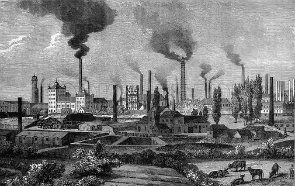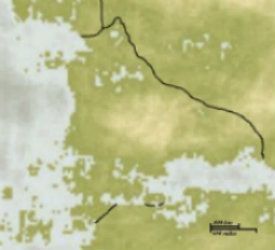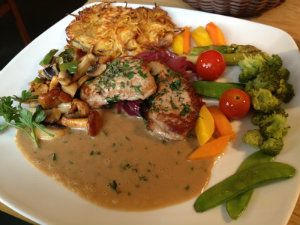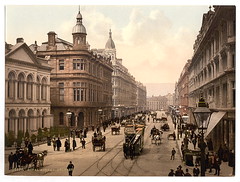This page is currently under construction, if you have any suggestions or comments, please send a telegram to the author.
Overview
- Capital City:
- Caspia
- Official Languages:
- Cygnaran
- Ordic
- Sulese
- Type of Government: Absolute Monarchy
- King: Leto Raelthorne
- Date of formation:
- 1871
- Total Area:
- 7,252,000 km2
- % of water: 7.8
- Population:
- 126,341,245
- Density: 13 /km2
- Currency:
- Gold Crown
- HDI:
- ▲0.802 (Very High)
- Time Zone:
- VST +6
The Kingdom of Cygnar (Cygnaran: Karalystė Cygnar, German: Cygnaran Kaiserreich) is the name given to the original 8 kingdoms that were unified in 1871, and is commonly reffered as ''The land of the Cygnus'' , or ''The golden country'' or even ''The Golden Empire''. To the north, it borders the nation of Mishmahig, to the south and east, several unorganized tribes. While only being officaly united in 1871, the first traces of civilization resembling cygnaran culture in southern Promethia, date back to the first millenium. The major kingdoms of Cygnar, such as Caspia, Ceryl and Imer, have origins dating back to 400 BC - 300 BC.
Cygnar can be called the birthplace of all warjacks, armored combat suits employed in the kingdom's military, and also, one of the most powerful nations within its region. Cygnar is the home to various important corporations, such as ''CYN Steelworks'', ''Hoechst Chemieingenieurwesen'', ''VKN shipyards'' and the Corvis-based enterprise of ''Engines East''. It is also home to one of the world's most important commercial routes, crossing the Hrothgar canal, that is crossed by over 300 commercial ships a day.
Even though Cygnar is made up of eight diferent counties, each one with a different capital city, it was determined in 1871, according to the Caspian treaty, that Caspia, the original capital of the Caspian Duchy, would remain as the national capital. The colonial possessions maintained by Cygnar extend to various corners of the world, totalling over 30 different islands around the oceans. Cygnar adds up a total of 126,341,245 souls, not taking into account the inhabitants of the mentioned colonial possessions.
Contents
- I. Overview
II.History
- 2.1 The Creation of the Golden States
2.2 No name yet
2.3 No name yet
2.4 The Origins of Cygnar
2.5 The treaty of Caspia
2.6 The Years of Industrialization
2.7 The Years of Expansion
2.8 Diplomacy and Alliances
- 3.1 Overview of Cygnar's Geography
3.2 Hydrology
3.3 Environment
3.4 Constituent States
3.5 Overseas Territories
V. Politics in Cygnar
- 5.1 Political Structure
5.2 Foreign Relations
5.3 Military
- 6.1 Cuisine
6.2 Art
6.3 Music
6.4 Sports
6.5 Architecture
- 7.1 Religion
7.2 Language and Education
7.3 Health
- 8.1 Major Cities
8.2 National Railways
8.3 Land Usage
8.4 Population density
8.5 Provinces and States in Cygnar
- 9.1 The Crown
9.2 People of Interest





































